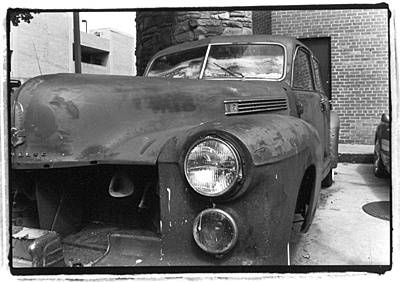All Nonfiction
- Bullying
- Books
- Academic
- Author Interviews
- Celebrity interviews
- College Articles
- College Essays
- Educator of the Year
- Heroes
- Interviews
- Memoir
- Personal Experience
- Sports
- Travel & Culture
All Opinions
- Bullying
- Current Events / Politics
- Discrimination
- Drugs / Alcohol / Smoking
- Entertainment / Celebrities
- Environment
- Love / Relationships
- Movies / Music / TV
- Pop Culture / Trends
- School / College
- Social Issues / Civics
- Spirituality / Religion
- Sports / Hobbies
All Hot Topics
- Bullying
- Community Service
- Environment
- Health
- Letters to the Editor
- Pride & Prejudice
- What Matters
- Back
Summer Guide
- Program Links
- Program Reviews
- Back
College Guide
- College Links
- College Reviews
- College Essays
- College Articles
- Back
DC Scooter Adventure
In recent years, travel has changed in ways I could never imagine; one of those changes being the introduction of scooters to commercial commute. While travelling in DC for a conference with some friends, I couldn’t help but notice the sporadic sightings of parked scooters and men in suits zipping on what looked like kids toys. While I was quite familiar with scooters, they were a toy from my childhood I never expected to see revived. From what I could tell, they seemed to be an efficient travel tool for small distances, going up to 15 mph and very cost-efficient. They seemed especially exciting for families who were travelling with children, as what could be better than zipping across DC in a scooter as an 8 year old? The idea was thrilling, so we did a little bit of research on how the system worked.
The e-scooters, or electric scooters, in DC are all owned by a plethora of different companies, each with different apps for finding and using the scooters. This mode of transport was started in 2012 and has since been spread to big cities around the world. After some heavy work by the Department of Transportation that established safety rules and approved some scooters for the sidewalk, the e-scooter business was off its feet! With thousands of scooters approved for sidewalk usage, these dockless devices have zoomed (only at 15 mph) through busy streets and commercial districts.
Whether you use Lime, Spin, Bird, Waybots, Jump or one of the many other certified public scooter brands, you get the exact same service. Find a scooter. Scan the QR code. Add your credit or debit card. And ride away for $1 plus 15 cents per minute. While that may sound expensive at first, you find that this totals to about $9 for an hour. In fact, for about $7, you can get across the entire Washington Mall in under 10 minutes. Bikes and Ubers can cost over $30 for the same travel distance—my Ubereats delivery charge cost more than an entire day of scooter travel!
With how economical this is, it sounds like a no brainer. Let’s scoot! But the actual experience is nowhere near as simple as the ads make it out to be.
The first glaring issue with the DC e-scooter system is that with so many different brands, each with their own apps, finding a bike on an app is not a streamlined process. Within two trips on these scooters, I had downloaded over 6 apps just to find a scooter nearby. Aside from the wasted phone storage space, many apps asked for deposits of $10 or $15 regardless of the trip distances- and with so many different apps, that was a lot of deposits that I was never going to use. Now, one may ask, why not just use one app? Let me introduce you to the second issue. Scooter frequency.
Occasionally, my travel group would get lucky and find five or six scooters together (many times a mishmosh of brands). But frequently, you’d have to walk a mile or two to get to a charged scooter. Unless you get lucky and find a charged scooter in your original travel path, deviating to deliberately find a scooter may cause you to walk longer than you originally would have had to. With many scooters left outside of obscure hotels by tourists, the scooter frequency in highly travelled areas was very low.
Since the scooters are dockless, charging is done by hired people who collect and charge many scooters at once. As this happens quite infrequently during the day, most of the scooters by the afternoon (or the peak of tourism) are already dead. Sure, it makes rider experience easier since the user does not have to return it to a specific spot, but it’s really not an advantage if half the scooters are unusable by 2pm. Not the best for business, huh?
But by far, the biggest issue is the app itself. The app is supposed to show location and battery of each scooter. Commonly, the app fails to show half of the scooters littering the streets saying they’re someplace they’re not. Other times, it shows scooters as charged when, in reality, the battery is fully drained. Perhaps you find a scooter partially charged, but little do you know that even closer, there is a fully charged one that just isn’t showing on the mpa.
While I appreciate the ingenuity of the scooter system, my Search for Scooters was a long and arduous task. While we didn’t use scooters as actual transportation, but rather as a fun toy while exploring and were consequently not late for anything important, it did create problems when only half the group could get scooters to go a mile down the mall to the Aerospace Museum and the rest had to walk. If you happen to find a scooter that is nearby, coincides with one of the apps on your phone and is charged, the scooter system could be advantageous and exciting for your trip. But honestly, without some million dollar jackpot luck, trying to find a scooter might just take you on a wild goose chase making you wish you had just walked.

Similar Articles
JOIN THE DISCUSSION
This article has 0 comments.

This was written as a review for the DC scooter assignment in school.